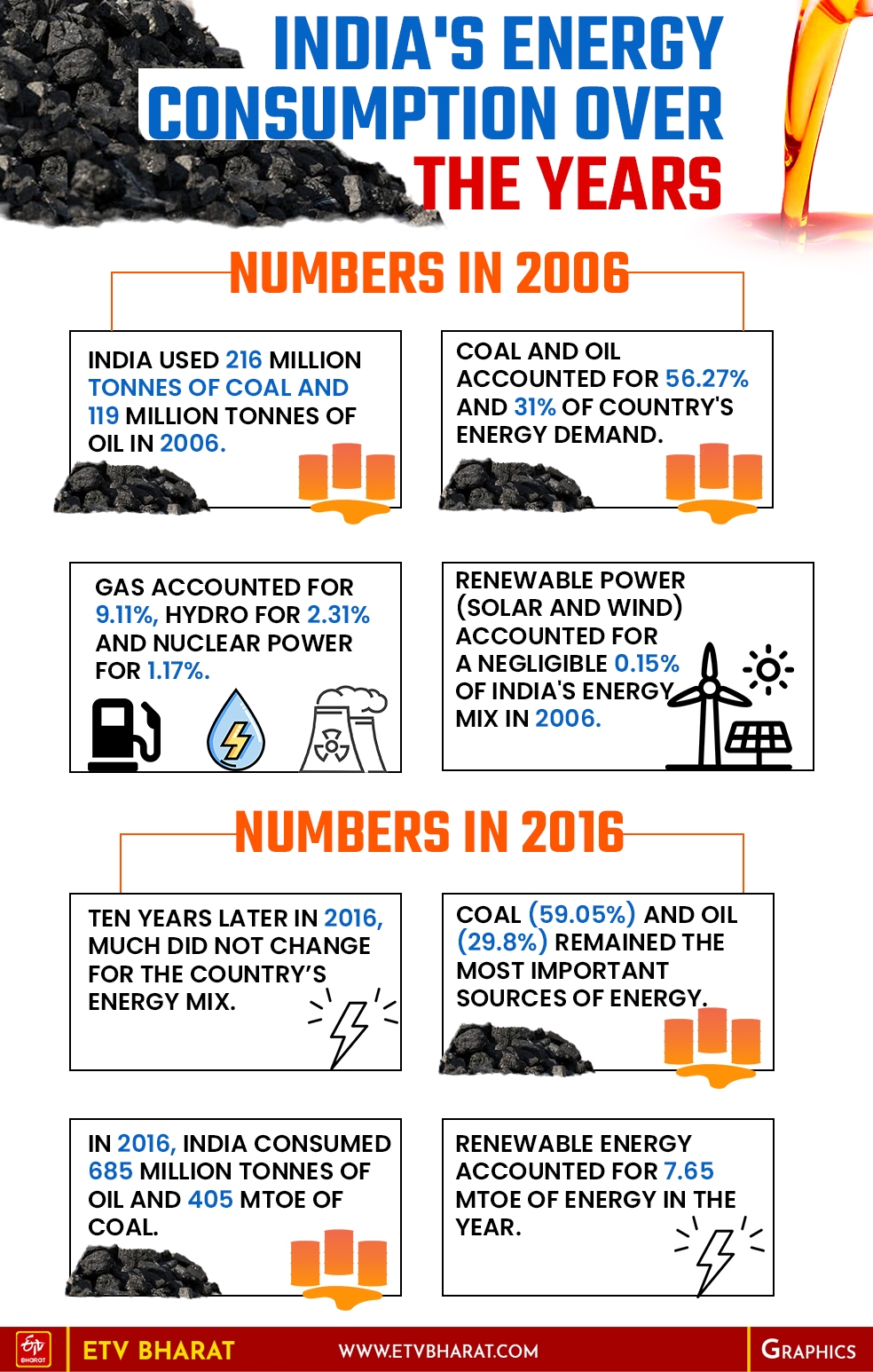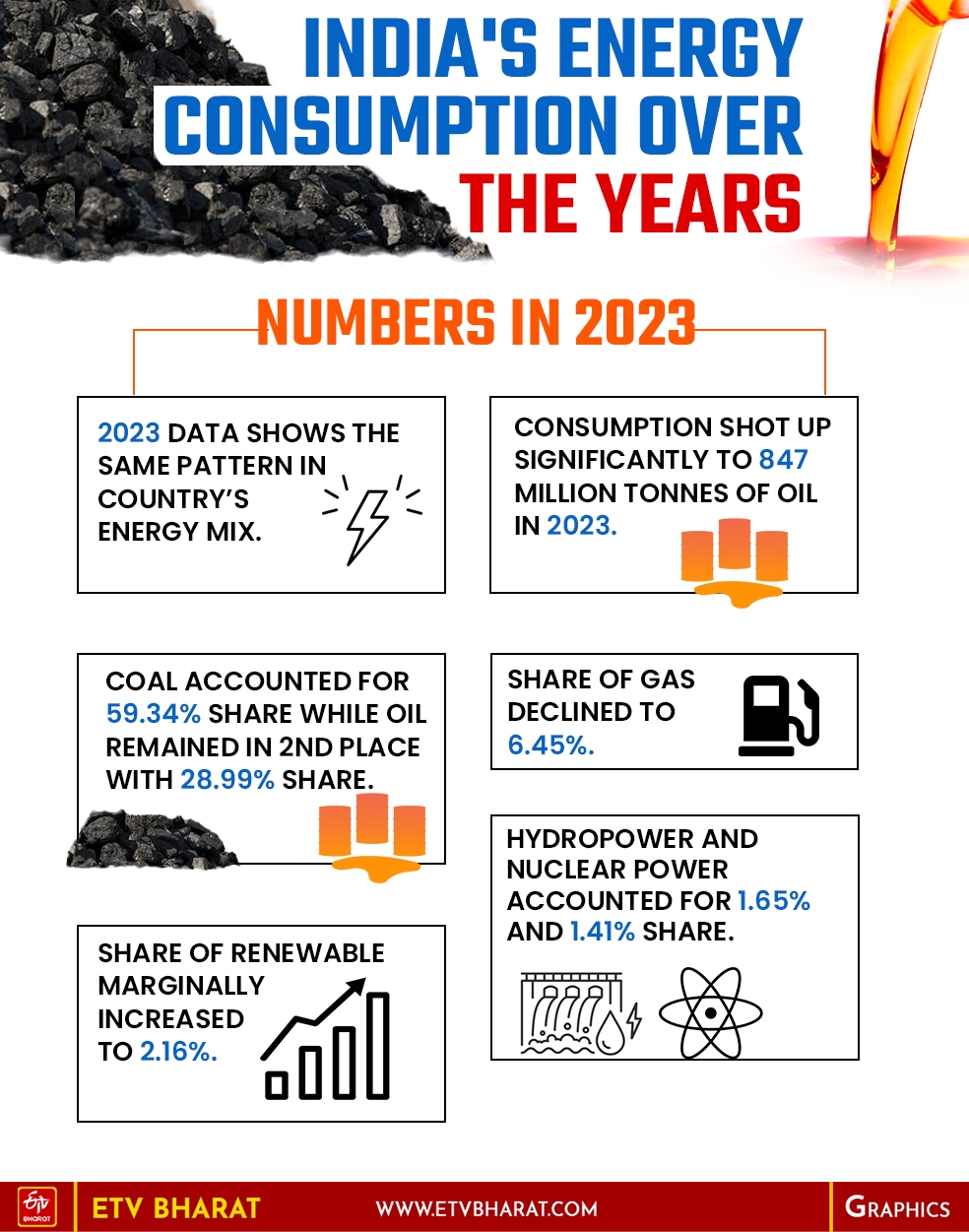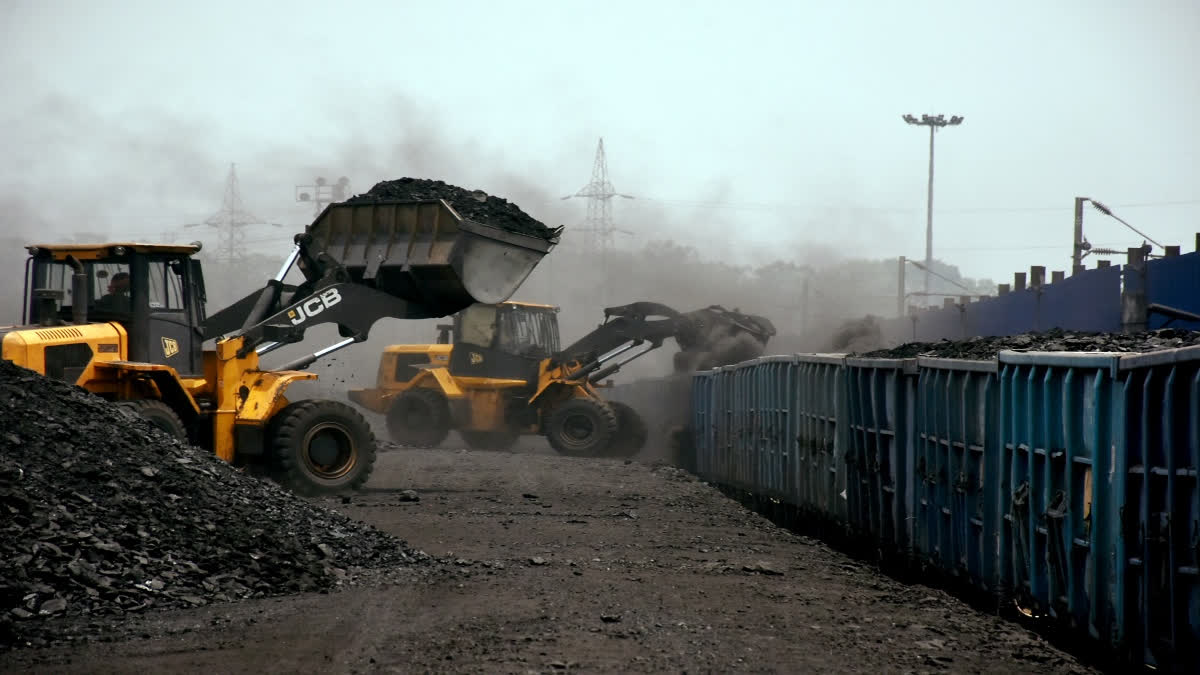The importance of oil or crude oil as a source of energy in a country's economic growth is decreasing as advanced economies transition towards cleaner forms of energy such as wind and solar but India's dependence on crude oil to propel its economic growth is likely to remain high for years to come, shows an analysis of energy data by ETV Bharat.
As per the Niti Ayog data analysed by ETV Bharat, India consumed a total 384 million tonnes of oil equivalent (mtoe) of energy in 2006. In the country's energy mix at that time, coal was the dominant source of energy and nearly two decades later coal is still the dominant source of energy to drive India's economic growth.
The data showed that India consumed 216 mtoe of coal in 2006, followed by 119 mtoe of oil while other energy sources such as gas, hydropower, renewables and nuclear power cumulative accounted for around 12 per cent of India’s energy mix in that year.
In other words, coal as a dominant source of India’s energy mix accounted for 56.27 per cent of the country’s energy demand while oil was the second most dominant source of energy with 31 per cent. Gas accounted for 9.11 per cent, hydro-power accounted for 2.31 per cent and nuclear power for 1.17 per cent and renewable power such as solar and wind power accounted for a negligible 0.15 per cent of India's energy mix in 2006.
Ten years later in 2016, much did not change for the country’s energy mix as coal and oil remained the most important sources of energy mix. In fact, while the share of oil as a source of energy declined marginally and at the same time coal’s share in the country’s energy mix increased to close to 60 per cent.
In 2016, India consumed a total 685 million tonnes of oil equivalent of energy (mtoe) which was an increase of nearly 80 per cent over the last decade as the country consumed 385 mtoe of energy in 2006.

India consumed 405 mtoe of coal, 204 mtoe of oil in 2016 while renewable energy accounted for 7.65 mtoe of energy in the year.
It means the share of coal in the country’s energy mix increased from 56.27 per cent to 59.05 per cent while the share of oil declined marginally from 31 per cent to 29.8 per cent. The share of gas was 7.09 per cent, hydro-power 1.52 per cent, nuclear 1.42 per cent while the share of renewable energy increased from a negligible 0.15 per cent to 1.12 per cent.
India’s energy mix in recent years
India’s energy mix continued to follow the same model over the last 15 years, from 2006 to 2020 as the analysis of data showed. In 2020, just before the COVID-19 global pandemic hit the world economy, coal and oil remained the two most dominant sources of India's energy mix. The data showed while coal’s share declined marginally from 2016 level to 57.07 per cent, the share of oil in the country’s energy mix increased marginally to 30.52 per cent.
The cumulative share of other sources such as gas, hydropower, nuclear and renewable remain in the range of 12-13 per cent as earlier as gas accounted for 7.52 per cent share, hydro-power for 1.73 per cent and renewable for 1.6 per cent and nuclear power for 1.56 per cent.
India consumed a total of 777 million tonnes of oil equivalent of energy in 2020 in which coal’s share was 444 mtoe, oil 237 mtoe and renewable energy’s share was 12.44 mtoe in that year.
In 2022, when the country’s economy was coming out of the two years of adverse impact of COVID-19, India consumed slightly less energy at 758 million tonnes of oil equivalent. In 2022, India consumed 441 mtoe of coal, 218 mtoe of oil while the share of renewable energy was 15.28 mtoe in that year.

In other words, the share of coal in India’s energy mix immediately after the COVID-19 pandemic was 58.12 per cent, as it remained the most dominant source of energy to propel the country’s economic growth with oil as the second most dominant source of energy with 28.8 per cent share.
While the share of gas in India's energy mix remained range bound at 7-8 per cent with 7.72 per cent share in 2022, the share of renewable went above 2 per cent for the first time with 2.02 per cent, share of hydropower was 1.72 followed by nuclear power at 1.62 per cent.
The latest data for the last year, 2023, showed the same pattern in the country’s energy mix but the total energy consumption has shot up significantly between 2022 and 2023, from a total 758 mtoe to 847 of mtoe, a growth of nearly 12 per cent in just one year.
The country consumed 847 million tonnes of oil equivalent of energy and coal and oil remained their dominant share in its energy mix. While coal accounted for 59.34 per cent share in the country’s energy mix, oil remained at the second place with 28.99 per cent share, the share of gas declined to 6.45 per cent, while the share of renewable marginally increased to 2.16 per cent. Hydropower and nuclear power accounted for 1.65 per cent and 1.41 per cent share in the country’s energy mix last year.



